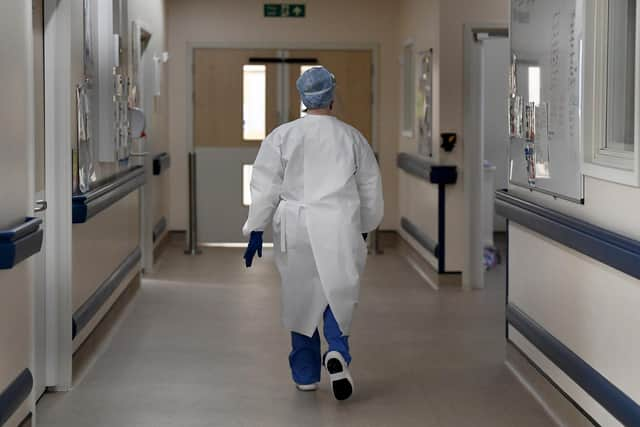Covid Scotland: A&E waits and record Covid hospital figures redefine 'crisis' in Scotland's NHS – Elsa Maishman
Creaking, lumbering, held together with masking tape and overtime – it’s been the same story on repeat for years and years. This makes it hard to tell how serious the problem is, as the service hobbles from crisis to crisis, somehow never actually collapsing.
Scots have been facing record waiting times at Accident and Emergency departments for more than six months: the records just keep getting worse.
Advertisement
Hide AdAdvertisement
Hide AdMore and more people are waiting. Waiting on hold to NHS 24 or their GP because they are under-resourced and under pressure, waiting for ambulances to arrive because they are stuck outside clogged-up A&E departments, waiting over 12 hours to make it through A&E.


Reporting on the NHS in recent weeks has been an exercise in finding synonyms for “crisis”, “record-breaking” and “worst-ever”.
Covid infection levels have been at their highest for two weeks in a row. The number of people in hospital with Covid has hit a new record almost every day for the past week and a half.
For two weeks we have had the highest-ever numbers of people waiting longer than four, eight and 12 hours at A&E, with the worst-ever performance against the four-hour target recorded this week.
Meanwhile the percentage of people referred for urgent suspicion of cancer treated within the target of 62 days fell to its lowest since records began in 2006, and nursing vacancies are still at record levels.
People warn of the health service being “overwhelmed”, and preventing this was given as the primary reason for lockdowns earlier in the Covid pandemic.
Politicians never quite defined what they meant by “overwhelmed” but, at its worst, it would probably look something like what happened in northern Italy during the early months of the pandemic, or in India as it was hit by the Delta variant: hospitals running out of oxygen, doctors forced to choose who to save and who to leave to be buried in mass graves.
This never happened in Scotland, and it’s not at risk of happening now. That doesn’t mean the NHS – or social care – isn’t overwhelmed. Targets are not being hit, patients are being forced to wait, staff across the board are reporting that they can’t deliver the care they want to and that patients are at risk.
Advertisement
Hide AdAdvertisement
Hide AdMany doctors and nurses disagree with the four-hour target at A&E, but it does serve a purpose of raising the alarm when the whole system is under too much pressure.
The overwhelming of the NHS is felt in tiny increments: the ambulance which arrives just a little later; the A&E admission which takes a few extra hours; the cancer diagnosis a few months delayed; the people in just a bit more pain or discomfort as they wait that bit longer for non-urgent diagnoses, treatments and operations.
As news reports of “worst-ever” and “record-breaking” begin to sound repetitive, it’s important to remember that these delays cost lives, as pointed out by the Royal College of Emergency Medicine. And aside from that extreme, they make thousands and thousands of lives that bit worse than they might otherwise have been.
Comments
Want to join the conversation? Please or to comment on this article.
